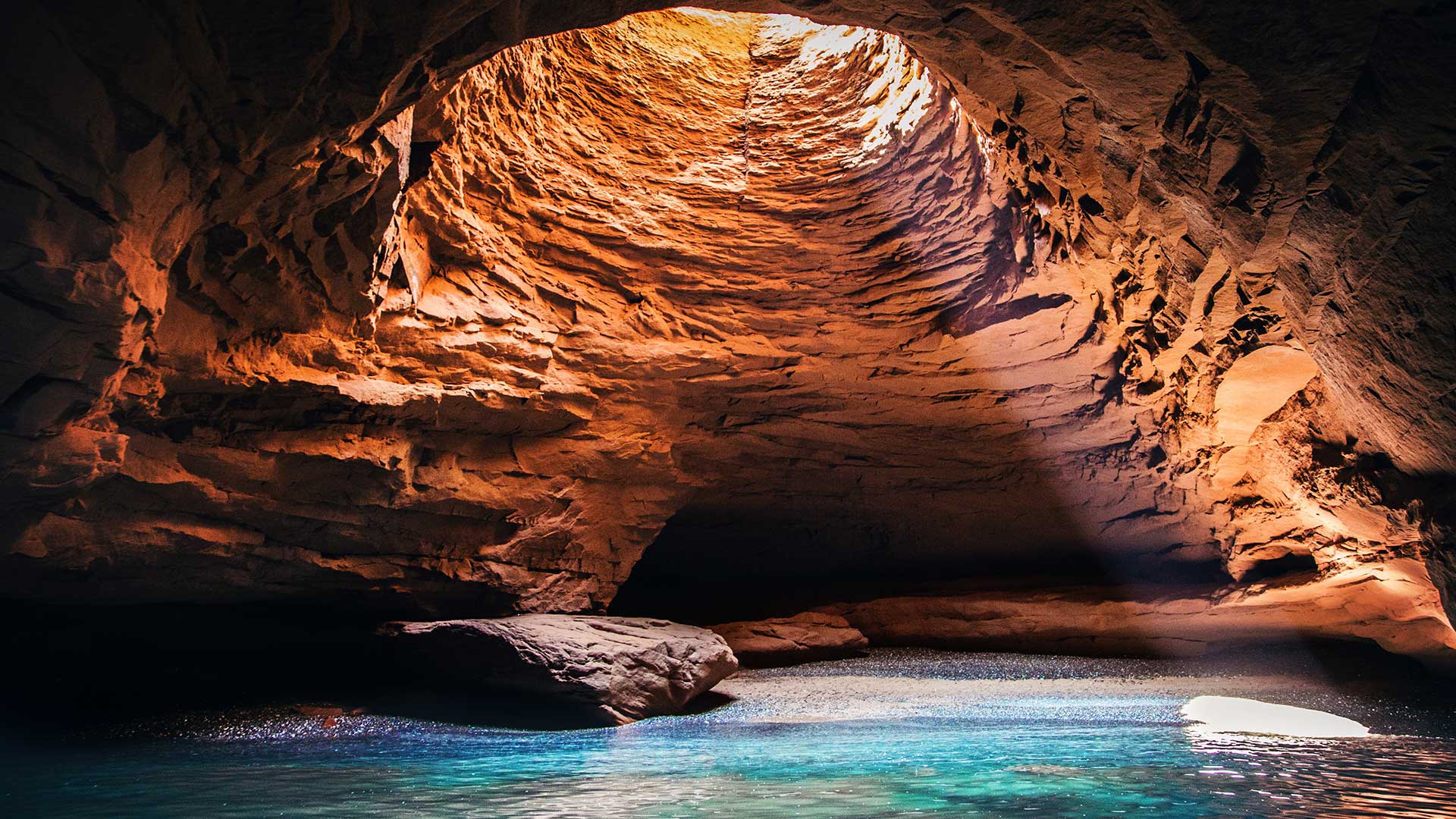温特弗灵附近的费灵加湖,德国巴伐利亚 Lake Feringasee near Unterföhring, Munich, Bavaria, Germany (© Westend61/Getty Images)
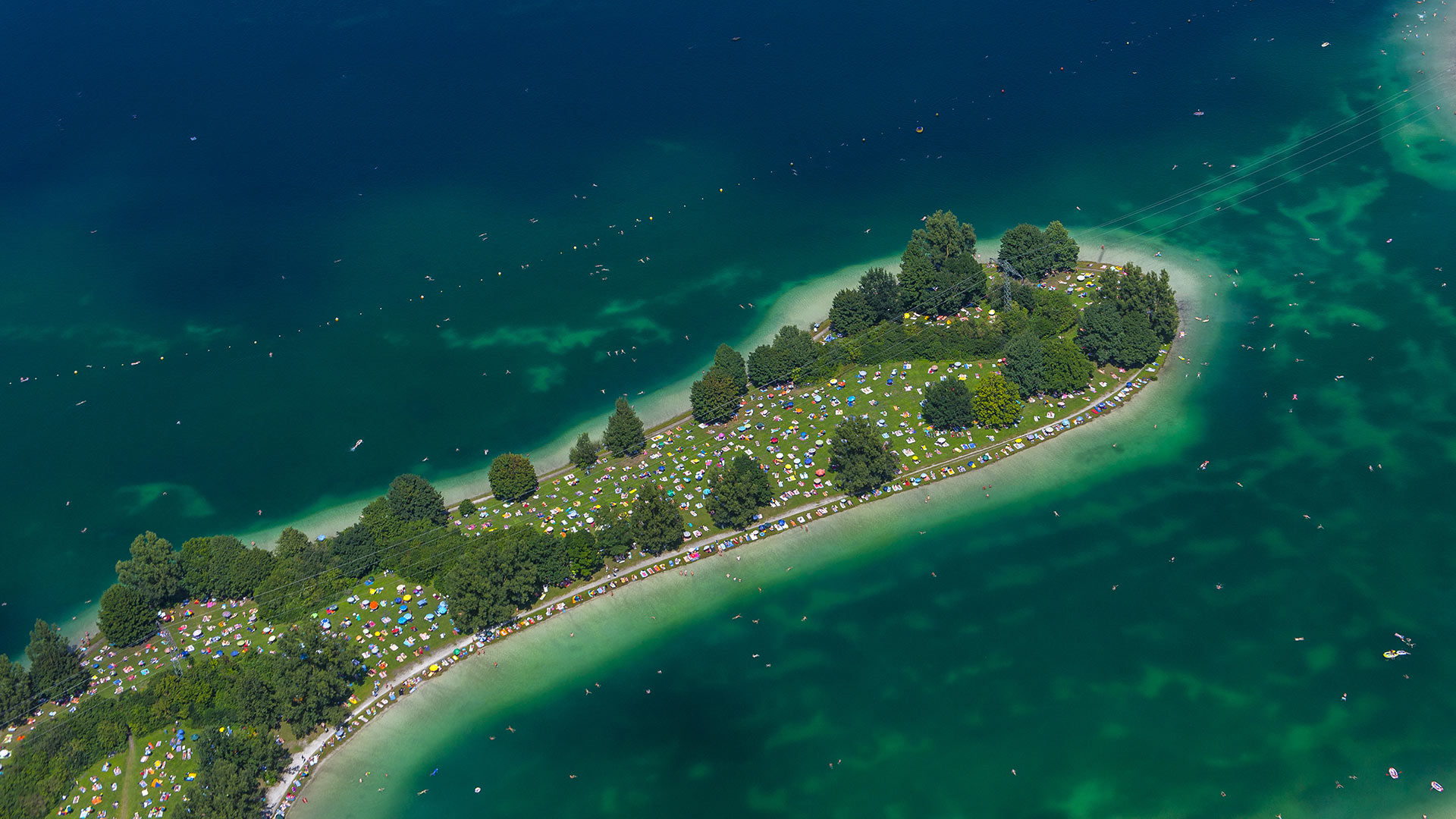
温特弗灵附近的费灵加湖,德国巴伐利亚 Lake Feringasee near Unterföhring, Munich, Bavaria, Germany (© Westend61/Getty Images)
Recreation area at the gates of Munich
How about a dip in the cool water? On the shores of the Feringasee near Unterföhring in the district of Munich, numerous bathers cavort in summer. The 32-acre lake is one of the most popular lakes in the Munich area. The Feringasee was built as part of the construction work for the A99 motorway and was used until 1976 as a quarry.
Tidal pools of Leça da Palmeira, Portugal © Fernando Guerra/age fotostock
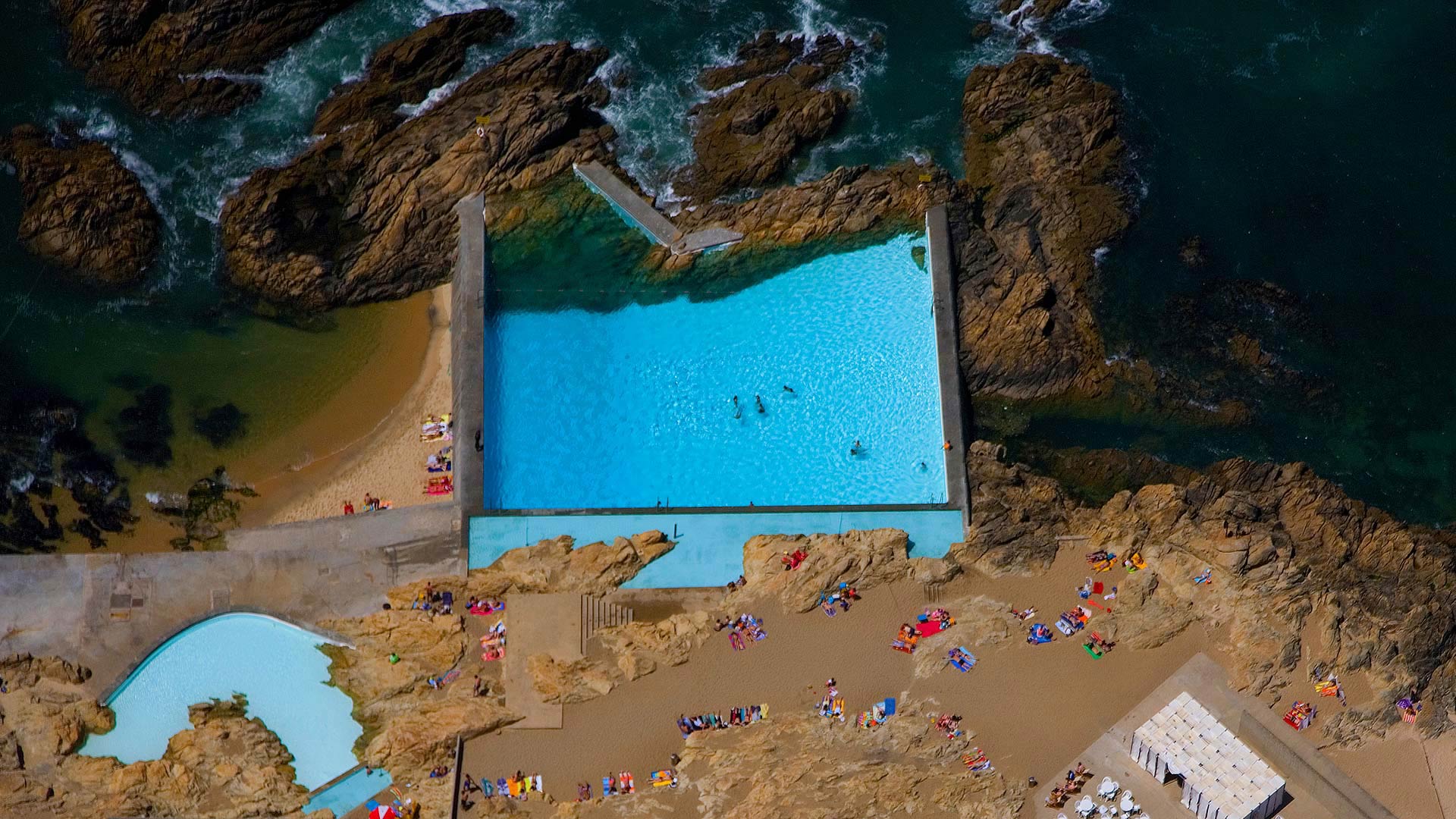
Tidal pools of Leça da Palmeira, Portugal © Fernando Guerra/age fotostock
A splash by the sea
You wouldn't know there's a highway behind these beaming blue pools, and that is just what architect Álvaro Siza Vieira intended. At the young age of 26, Álvaro Siza designed these Piscinas das Marés (Pools on the Beach). His creation is a national landmark and is praised for the way the pools blend into the landscape from some perspectives, and show a harmonious blend of nature and artificiality from others. The design respectfully floats the pools between the soft sands of the beach and the rocky outcrops that have been here long before 1966, when the project was completed. The shapes of the pools simultaneously follow and oppose the natural lines of the terrain that surround them, a masterful balance that foregrounds the beauty of each, as well as the entirety of the scene Álvaro Siza has helped to set.
Of course, pools are for swimming, and locals and visitors flock to Leça da Palmeira for summer fun. The larger saltwater pool is designated for adults and sits close to the ocean. The other pool is located more inland and has an entrance that is fairly low to the ground—a lighthearted signal that this is where young kids can swim. Álvaro Siza built changing rooms and a café here too, with low-walled pathways that are carefully positioned to not only leave the views of the coastline undisturbed, but they follow the right angles to enhance what you see, whether you are headed to grab a bite or take a swim.
马格达伦群岛洞穴内部,加拿大魁北克 (© Virginie Fréchette/Getty Images)
从午夜穹顶看育空河,加拿大育空道森市 Yukon River viewed from the Midnight Dome, Dawson City, Yukon, Canada (© Robert Postma/Getty Images)
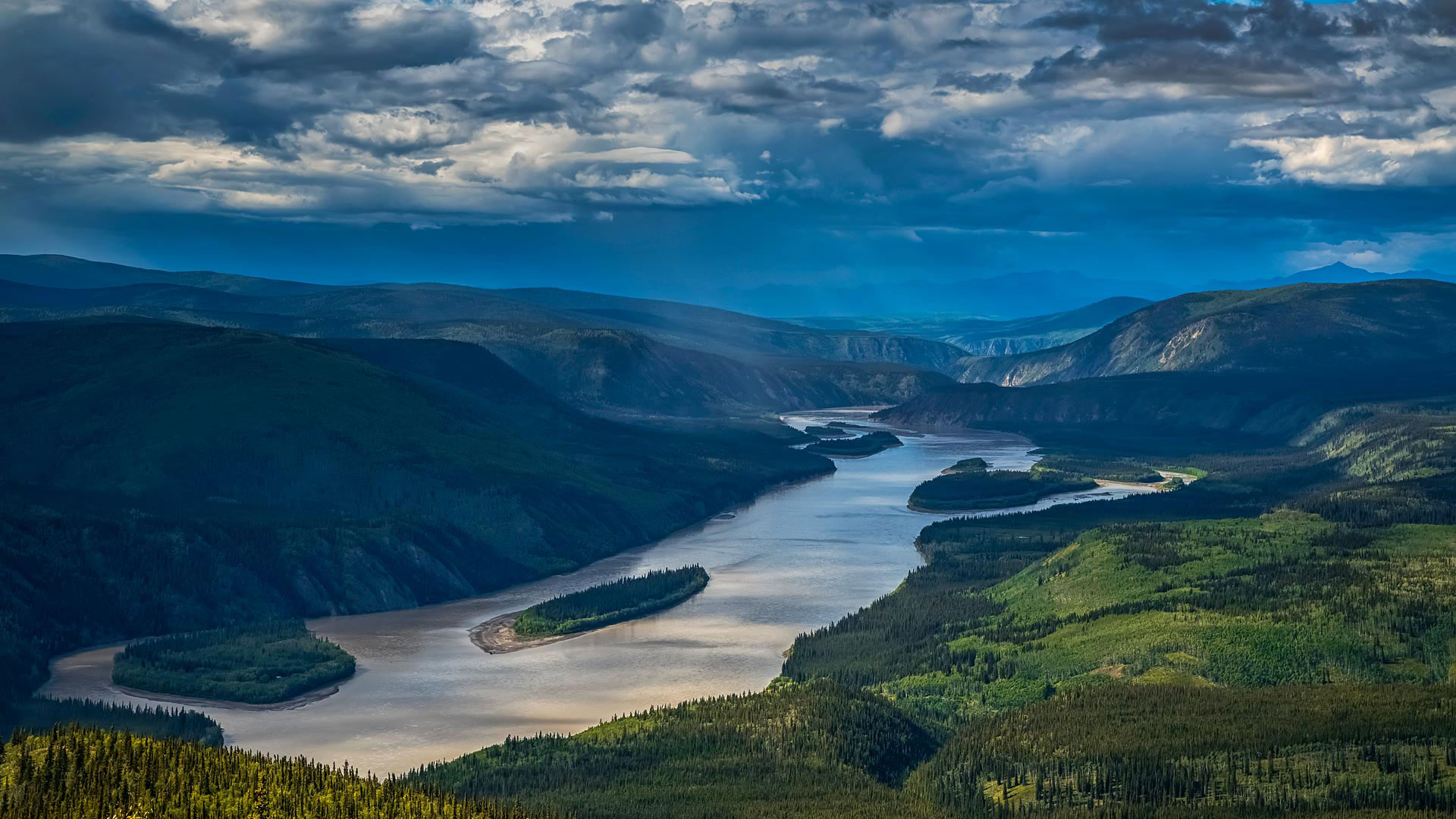
从午夜穹顶看育空河,加拿大育空道森市 Yukon River viewed from the Midnight Dome, Dawson City, Yukon, Canada (© Robert Postma/Getty Images)
Shining like Klondike gold
On August 16, 1896, two prospectors had their hopes literally pan out when they found a large deposit of gold along the banks of what would soon be known as the Bonanza River in the Klondike. And with that, Skookum Jim Mason (aka Keish) and his American brother-in-law George Carmack set in motion the Klondike Gold Rush—the richest gold strike in North American history. Because of the remoteness of the find, it would be over 11 months before the world found out. And it did so in the most dramatic fashion, when the steamers Portland and Excelsior pulled into Seattle’s harbor carrying over one ton of gold (worth over $1 billion in today's dollars).
The news reached the rest of the United States and Canada during a prolonged economic depression, which may help to explain why over 100,000 people quit their jobs (including the mayor of Seattle) and set out for the Yukon with dreams of striking pay dirt. But the trip was harrowing and arduous, and less than half of those who set out for the Klondike in Canada’s Yukon Territory wound up making it there. But the sudden influx of those who did complete the journey briefly turned Dawson City into the second largest city in Canada...and certainly the most expensive. Eggs cost $3 apiece (the equivalent of $81 today) and salt was literally worth its weight in gold. In the saloons of the boom town, a profit could be made by simply sweeping the floor and collecting spilled gold dust. Most who came lost everything. Today, Dawson City has a population of just under 1,400, making it the second largest city in the Yukon.
斯默根,瑞典 Smögen, Sweden (© Martin Wahlborg/Getty Images Plus)
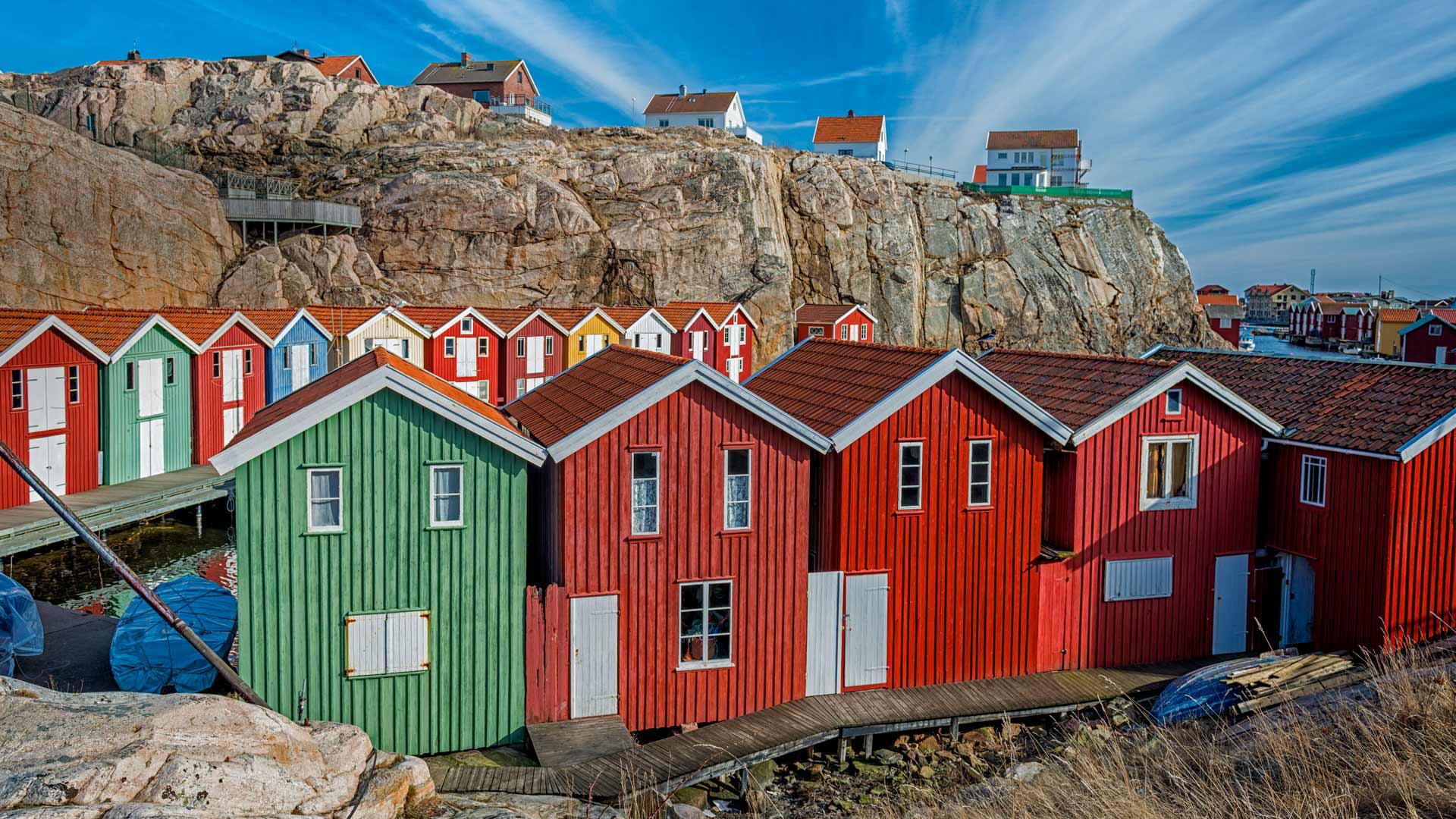
斯默根,瑞典 Smögen, Sweden (© Martin Wahlborg/Getty Images Plus)
It's surströmming time
The historic wooden pier of Smögen, Sweden will be busy—and pungent—today. The third Thursday in August means one thing: surströmming season has arrived and all over Sweden, brave residents stand at the ready with can-openers in hand. If you've never taken part in a surströmmingsskiva, the Swedish word for this particular event, you're going to need a bucket of water, some side dishes, and a strong constitution.
In April and May, freshly caught herring from the Baltic Sea is quickly brined in just enough salt to keep the fish from rotting. In July, the rapidly fermenting fish is canned and then, come this day every summer, the cans are opened—outdoors and often submerged in a bucket of water to reduce the smell—and eaten with flat bread, potatoes, and usually a chaser of strong alcohol or beer. Some say sour herring, aka surströmming, is one of the most putrid smelling foods on Earth. Others say it's delicious.
火星快车号传来的火星南极冰盖图像 Mars Express image of the icy cap at Mars’ south pole (© ESA/DLR/FU Berlin/Bill Dunford)
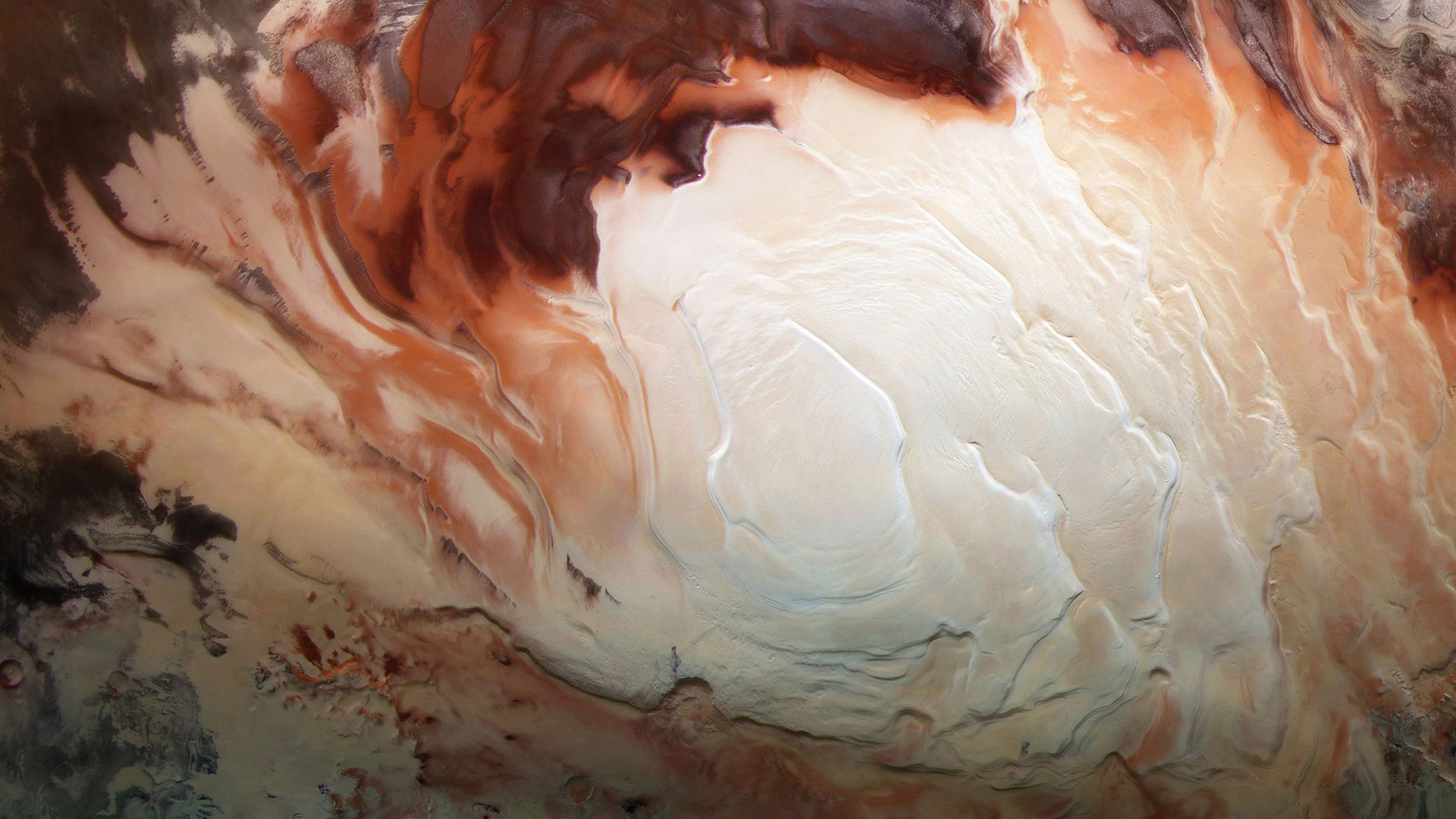
火星快车号传来的火星南极冰盖图像 Mars Express image of the icy cap at Mars’ south pole (© ESA/DLR/FU Berlin/Bill Dunford)
An ice cap-puccino
No, that's not a new frozen coffee drink from Starbucks; it's the southern polar ice cap on Mars. Mars is the only other planet in the Solar System with a visible ice cap, though it differs from Earth’s because it is comprised of both water ice and frozen carbon dioxide. The ice cap looks smooth here, but its surface is pockmarked with swiss cheese-like depressions caused by the seasonal freezing and melting of the Martian winters and summers. While Mars has been observed by humanity for thousands of years, it was only on August 13, 1642, that Dutch astronomer Christiaan Huygens observed the ice cap using the most powerful telescope of the day. The giant of science designed the 50x magnification telescope himself, and with his brother, produced the lenses as well.
一场雷雨席卷西奥多·罗斯福国家公园,北达科他州 A thunderstorm rolls across the Theodore Roosevelt National Park in North Dakota (© Judith Zimmerman/Danita Delimont)
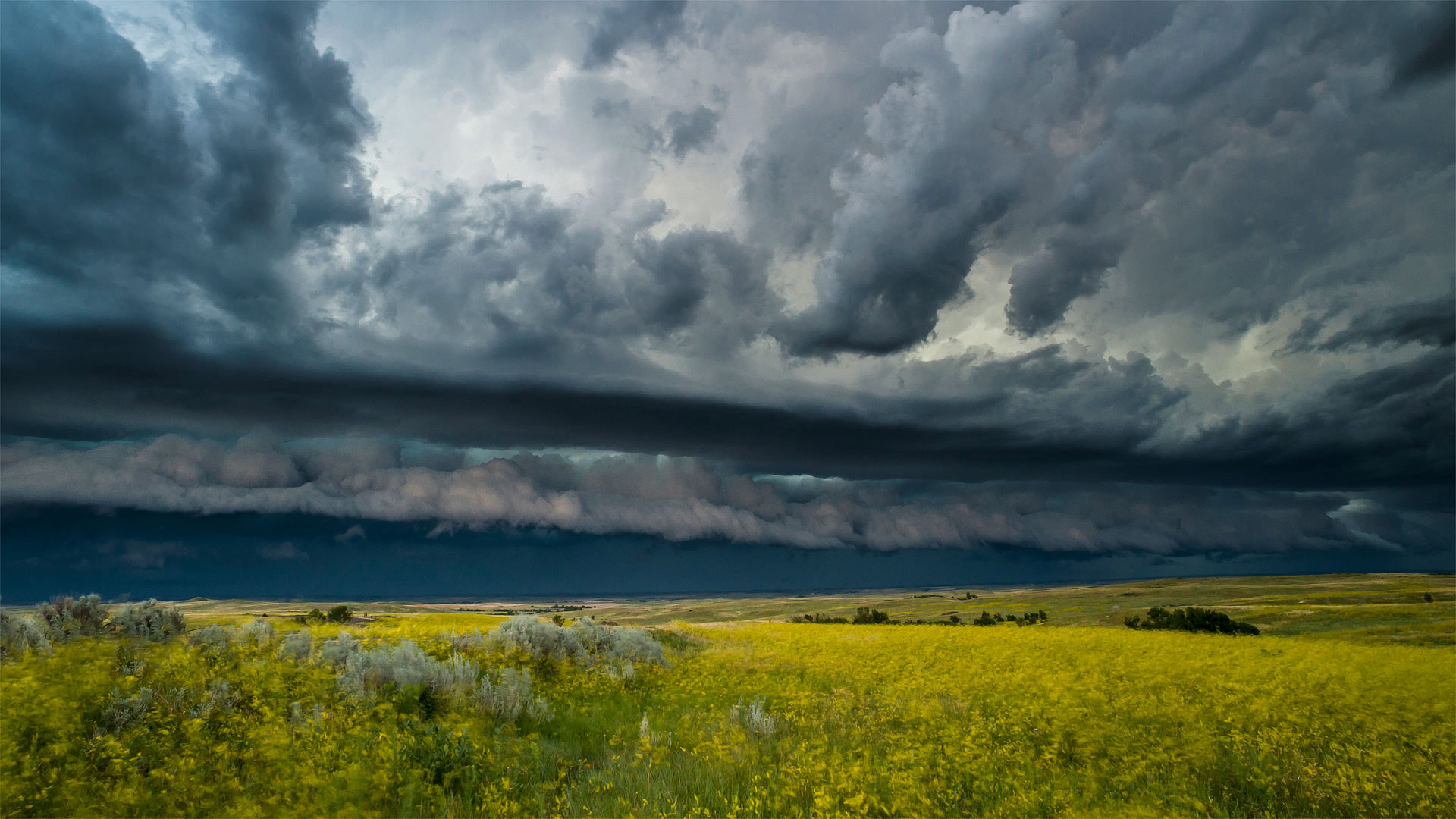
一场雷雨席卷西奥多·罗斯福国家公园,北达科他州 A thunderstorm rolls across the Theodore Roosevelt National Park in North Dakota (© Judith Zimmerman/Danita Delimont)
Storm rolls over the Badlands
Today's image of a thunderstorm moving over grasslands in the Theodore Roosevelt National Park shows the power of nature and the power of conservation. In 1883, Teddy Roosevelt, then a New York State Assemblyman, traveled to the North Dakota Badlands to hunt bison. During this trip, Roosevelt fell in love with the cowboy lifestyle and the freedom he experienced. Before heading back east, he became part owner of the Maltese Cross Ranch. A year later he was back in North Dakota and had built Elkhorn Ranch. Life in the west inspired Roosevelt, who began writing books and articles about it. He would go on to establish six national parks and 18 national monuments, greatly increasing the size of the National Park System.
At the Theodore Roosevelt National Park, the only US national park named after a person, you can see some of the places that helped inspire Roosevelt's conservation efforts. In the park's Elkhorn Ranch Unit, the location of his 'home ranch,' you can experience the same remoteness that he craved. At the South Unit Visitor Center you can see the cabin he used as his home during his first trips to the Badlands, now restored to its original state. And if that's not enough, hours of scenic drives, hiking trails with dramatic views, and wildlife watching are sure to make a visit to the area memorable for any visitor.
The Supertree Grove in Singapore's Gardens by the Bay (© John Warburton-Lee/Danita Delimont)
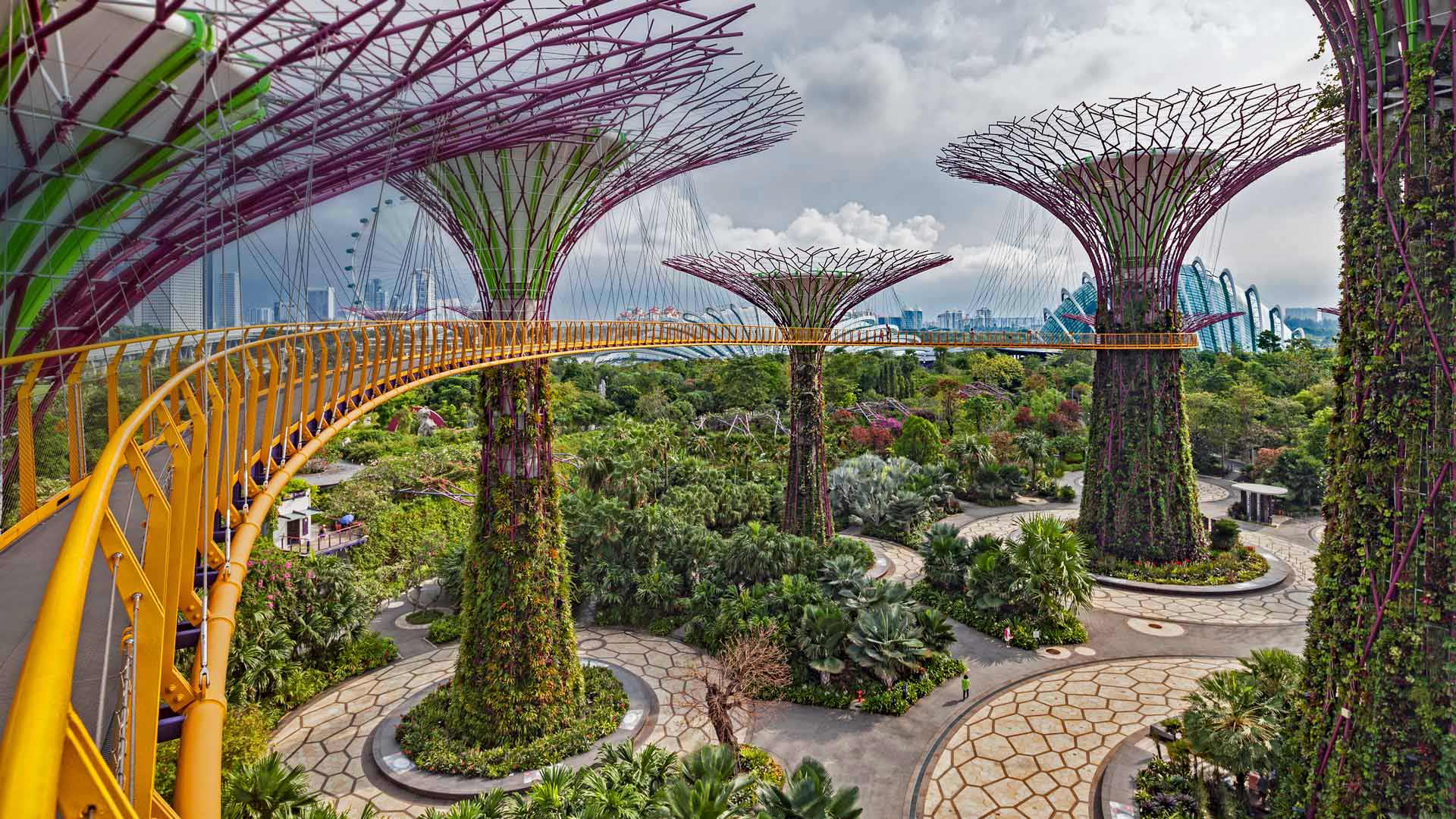
The Supertree Grove in Singapore's Gardens by the Bay (© John Warburton-Lee/Danita Delimont)
In the Supertree Grove
Every August 9, the streets of Singapore fill with revelers celebrating the anniversary of the city-state's independence from Malaysia. Like patriotic events in other nations, there are parades, speeches from political leaders, and fireworks. This year also marks the 200th anniversary of the first British colonial outpost in what would become modern-day Singapore.
We're joining in the fun by sharing this photo of the Supertree Grove—part of the Gardens by the Bay, one of Singapore's most ambitious and interesting public attractions. The entire park is designed to bring more nature into Singapore's dense, urban environment, and to show off some of the ecologically friendly construction ideas that concentrate on conservation and preservation. The 'supertree' structures in this grove collect rainwater, harness solar power, and even vent air into and out of nearby greenhouses.
伊莎贝尔二世桥,塞维利亚 Seville, Spain’s Guadalquivir River and Triana Bridge for the 500th anniversary of Magellan’s departure (© Zu Sanchez Photography/Getty Images)
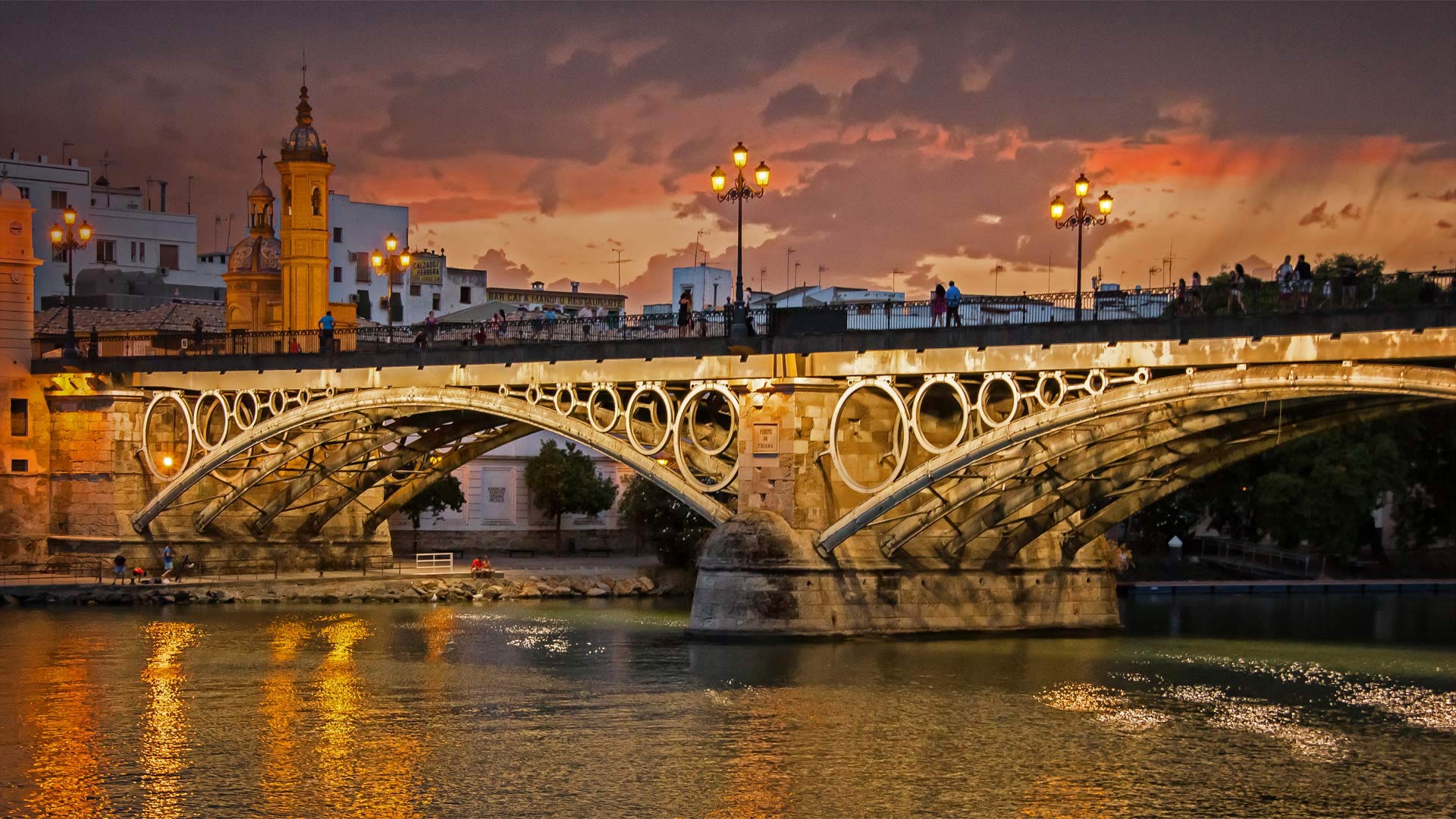
伊莎贝尔二世桥,塞维利亚 Seville, Spain’s Guadalquivir River and Triana Bridge for the 500th anniversary of Magellan’s departure (© Zu Sanchez Photography/Getty Images)
Seville celebrates first world tour
Today in 1519, Ferdinand Magellan departed from Seville on his quest for a western passage to the Spice Islands. He sailed five ships and a crew of more than 230 men down the Guadalquivir, the river in today's image. The Triana Bridge, the oldest in Seville, was built 330 years after the expedition's return to the city in 1522. While successful in finding a western route to the Pacific Ocean and returning with valuable spices, it came at great cost. Only one ship, under the command of Juan Sebastián Elcano, and 17 other crew members completed the global circumnavigation. Magellan didn't. He was killed on April 27, 1521, at the Battle of Mactan in the Philippines.
Seville and other Andalusian cities will celebrate these milestone anniversaries as part of the 'V Centenario.' For the next three years—the same amount of time it took Magellan's fleet to sail around the world—there will be a slate of activities, including academic conferences, museum exhibits, nautical tours, educational events, and much more, to recognize, detail, and celebrate various aspects of this historic voyage.
Cape Neddick Light in York, Maine (© Haizhan Zheng/Getty Images)
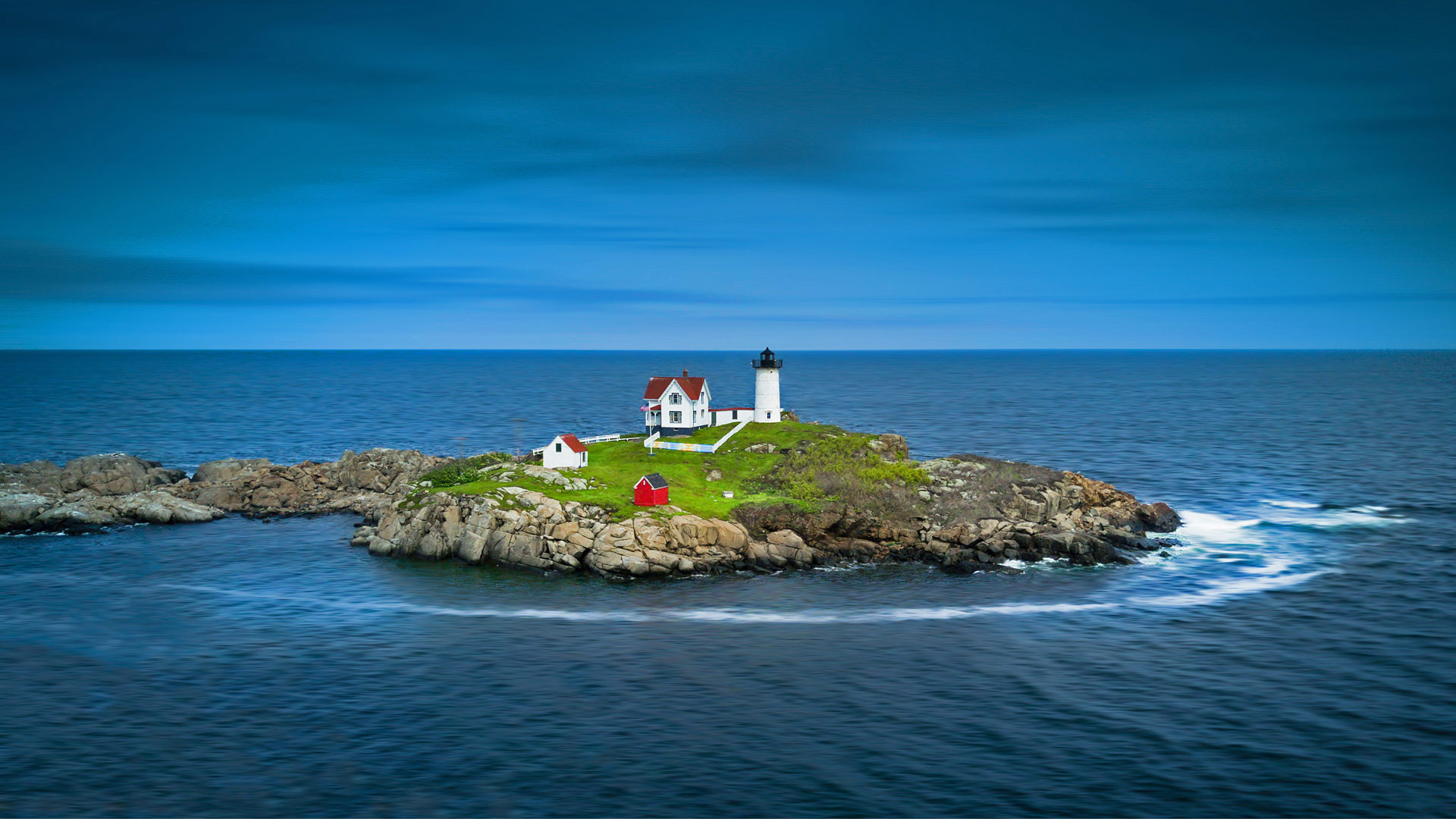
Cape Neddick Light in York, Maine (© Haizhan Zheng/Getty Images)
Nubble Island's only industry
Cape Neddick Light sits on a tiny island called Nubble Island, or 'the Nub'—just 100 yards from the mainland of the cape. It's on Maine's southern shore and is one of just eight lighthouses in Maine that still use a Fresnel lens to amplify the light. The island isn't accessible to the public, but because it's so close, many visitors come to Sohier Park on the cape for the view of the lighthouse. Why August 7 for Lighthouse Day? Because it was this day in 1789 the US government placed all lighthouses under federal control to make sure these important safety signals were all built, supported, and maintained equally.
